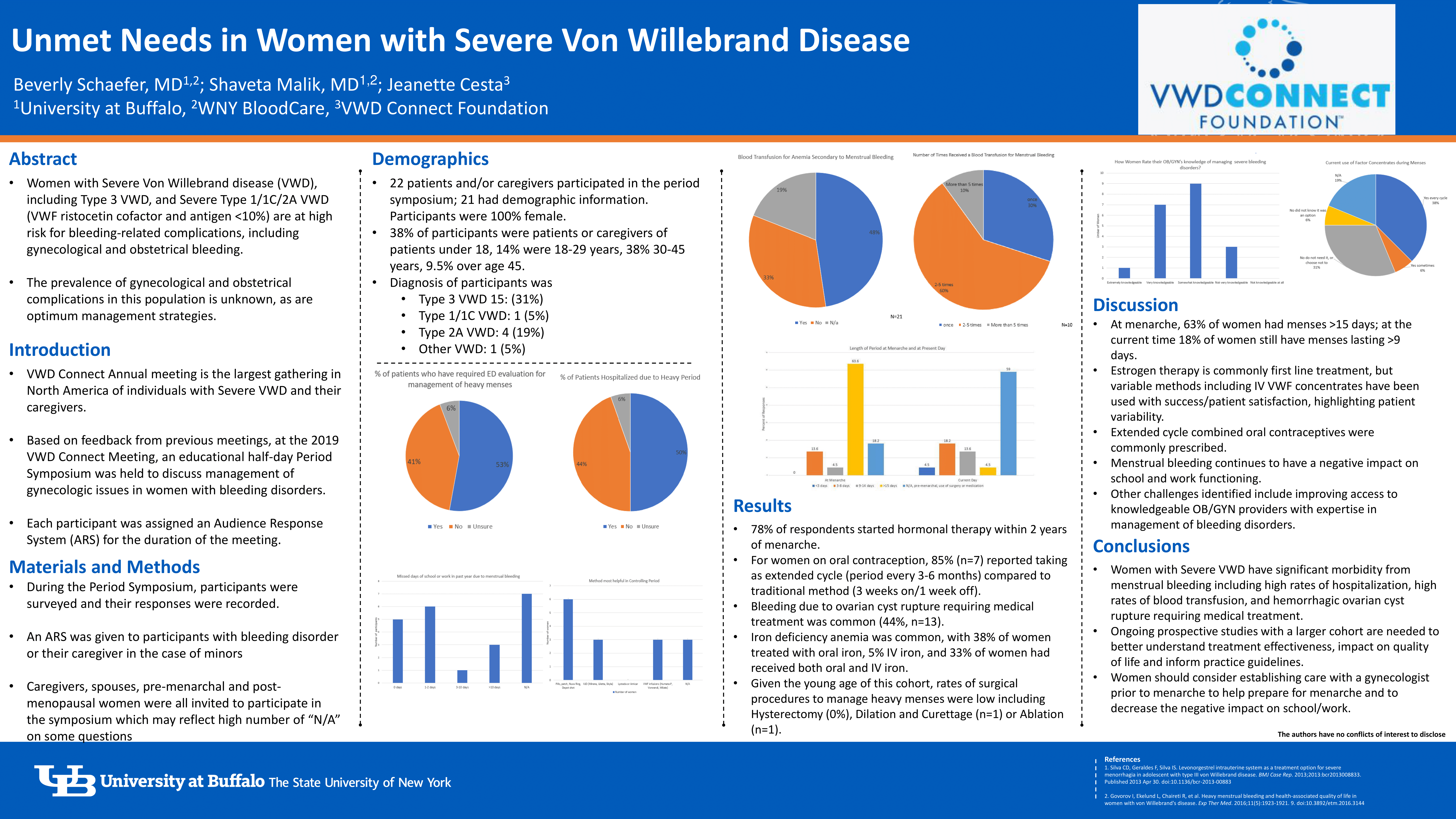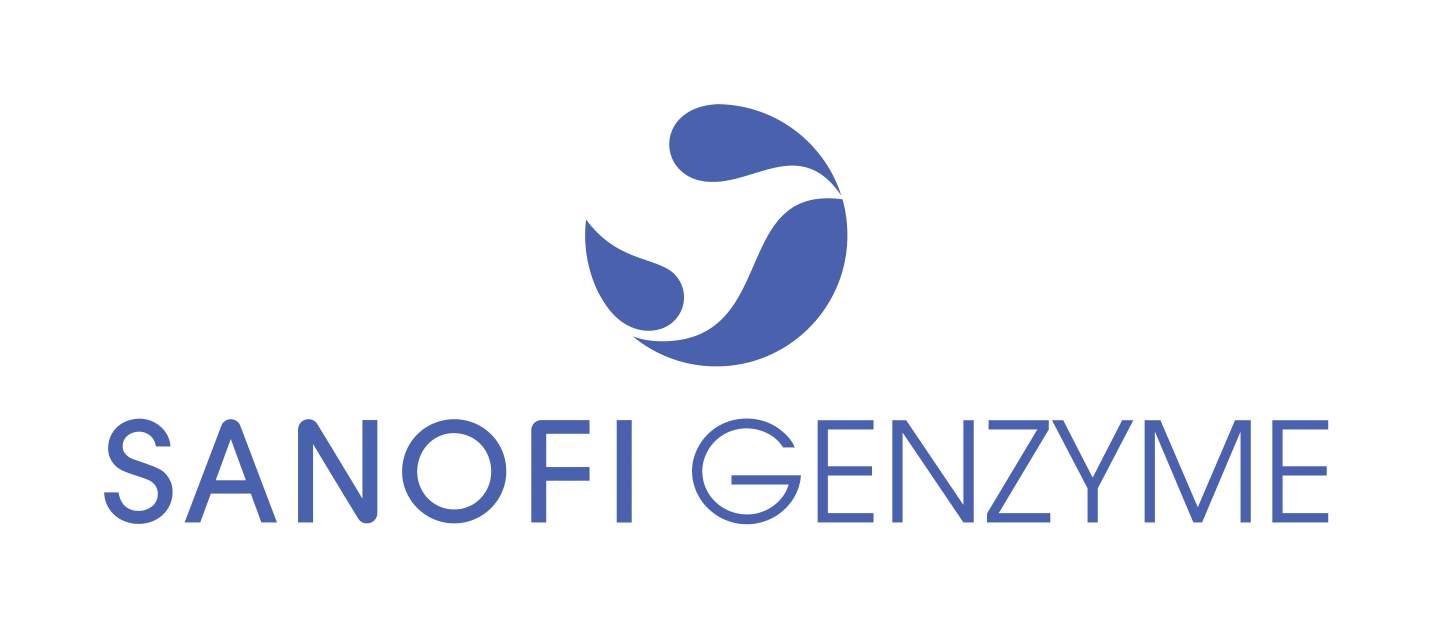National Hemophilia Foundation (NHF) - Posters
Unmet Needs in Women with Severe Von Willebrand Disease |
|
|
|

|
Objective:
Women with Severe Von Willebrand disease (VWD), including Type 3 VWD, Severe Type 1/1C VWD (VWF ristocetin cofactor and antigen ?10%), and Severe Type 2A (VWF ristocetin cofactor and antigen ?10%) are at high risk for bleeding-related complications, including gynecological and obstetrical bleeding, however the prevalence of these complications in this population is unknown, as are optimum management strategies.
Methods:
Participants who attended the VWD Connect Foundation Annual meeting were given an Audience Response System to be used for the duration of the meeting. During the half-day Period Symposium, participants were surveyed, their responses were recorded and analyzed using basic statistical methods.
Summary:
22 patients and/or caregivers participated in the period symposium, 21 of which had demographic information. Participants were 100% female. 38% of participants were patients or caregivers of patients under 18, 14% were 18-29 years, 38% 30-45 years, 9.5% over age 45. The diagnoses of participants included 15 Type 3 VWD (71%), 1 Type 1/1C VWD (5%), 4 Type 2A VWD (19%), 1 other VWD (5%).
Women experienced high rates of complications related to gynecological bleeding including emergency department evaluation for heavy menstrual bleeding (HMB) in 53% (n=20), hospitalization for HMB in 50% (n=22), blood transfusion for HMB in 48% (including >2 times in 7/10), iron deficiency anemia in 76% (n=21), and hemorrhagic ovarian cyst requiring treatment in 44% (n=13).
At menarche, 63% of women experienced prolonged menses >15 days (n=22), and at the current time 18% of women reported menses lasting >9 days (n=22). 78% of participants (n=14) reported starting hormonal therapy within 2 years of starting their period. Management practices varied, with most effective methods in managing periods reported as hormonal pills/patch/ring or medroxyprogesterone injection by 6, intrauterine device by 3, VWF infusions by 3 (n=15). For women on oral contraceptives, 6/7 were prescribed extended cycle oral contraceptives. Rates of surgical procedures to manage HMB were low in this young cohort, including hysterectomy (0%), dilation and curettage (n=1) or ablation (n=1).
HMB continues to have a negative impact on school and work functioning, with 66% of respondents (n =22) missing at least 1 day of school/work in the past year. Other challenges identified include improving access to knowledgeable OB/GYN providers with expertise in management of bleeding disorders.
Conclusions:
Women with Severe VWD have significant morbidity from HMB including high rates of hospitalization, high rates of blood transfusion, and hemorrhagic ovarian cyst rupture requiring medical treatment. Women should consider establishing care with a gynecologist prior to menarche to help prepare for menarche and to decrease the negative impact on school/work. Ongoing prospective studies with a larger cohort are needed to better understand treatment effectiveness, impact on quality of life and inform practice guidelines.



